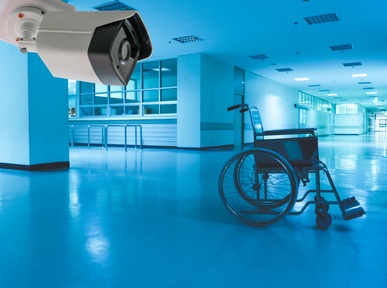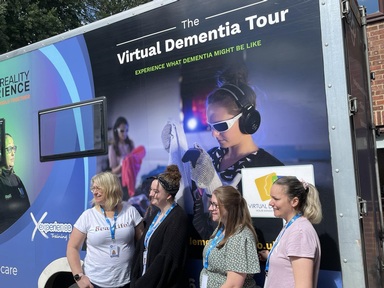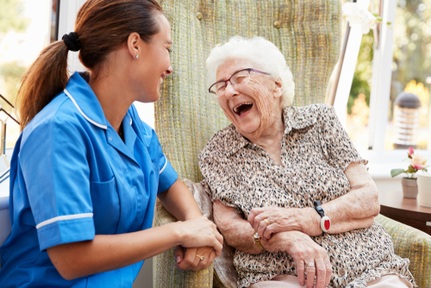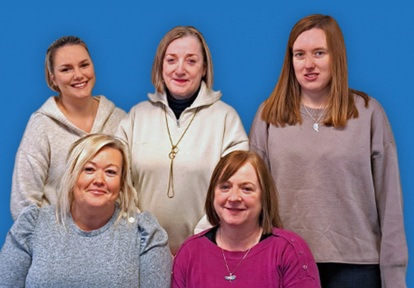Nearly a third of care home staff want CCTV cameras in care homes
Thirty per cent of care staff would like there to be CCTV in both the communal areas and bedrooms of care homes, according to a new survey by the leading reviews site, carehome.co.uk.
 The figure was sourced from a survey completed by 2,333 care home owners, managers and staff, which revealed 45 per cent do not have any CCTV in the care homes in which they work. Only five per cent say they have CCTV in both communal areas and bedrooms.
The figure was sourced from a survey completed by 2,333 care home owners, managers and staff, which revealed 45 per cent do not have any CCTV in the care homes in which they work. Only five per cent say they have CCTV in both communal areas and bedrooms.
The survey also showed that 29 per cent say they have surveillance cameras in communal areas and only one per cent have cameras just in the bedrooms. A total of 36 per cent believe surveillance cameras should be in care home communal areas and 14 per cent of care home staff think CCTV should not be in care homes at all.
A spokesperson for carehome.co.uk, said: “The findings show a large number believe CCTV in care homes would provide more transparency and give reassurance to staff, residents and their families. The number of care home staff saying they have CCTV throughout is currently extremely low. However more care homes may be forced to go down the route of installing cameras in order to boost trust.
“The majority of care homes in the UK give good care and it is extremely sad we have reached this point where families feel the need for cameras to check their relative is safe.”
Former Attorney General has called for CCTV to be mandatory in care homes
Last year Dominic Grieve MP, the former Attorney General, renewed calls for legislation to be enacted to make CCTV compulsory in communal areas in all care homes. Mr Grieve argued in a House of Commons debate on the issue in September: “CCTV is sometimes seen as a spy, but that is not the intention here. The point is not just to catch people who may be doing something wrong, but to have systems in place that enable standards to be improved.”
However care minister, Caroline Dinenage who also took part in the debate resisted calls to make surveillance cameras mandatory saying she would want more research to be carried out into the issue. She also highlighted that surveillance cameras could be an “administrative and financial burden on care homes, many of which are small businesses with very few administrative staff”.
She added: “The compulsory use of CCTV cameras in the communal areas of care homes would require a change in the law, and it is not clear that that blanket approach would be proportionate or respect the needs and wishes of everyone who lives in a care home.”
Care home group installing cameras to be more transparent and regain public's confidence
Wellburn Care Homes, which runs 14 care homes in north east England, is in the process of installing surveillance cameras in all of its care homes in both the communal areas and residents’ bedrooms in a bid to be more transparent and ‘regain the confidence of the public’. Its executive chairman, Rachel Beckett reveals that “the subject of safety monitoring systems is on the table for a number of reasons”.
She said: “Of course anything that can help safeguard those who are no longer able to safeguard themselves, can only be a good thing. But from our own perspective, the fundamental reasons behind our decision to install was more than us just saying we have nothing to hide. That in itself wasn’t enough for me. I wanted to make sure our system not only offered improved safeguarding measures, but real tangible benefits to our residents and staff on a daily basis.
“Residents and their loved ones have commented that the system adds an extra layer of comfort for them, and that's really nice for us too. It’s important to remember that the cameras have been installed as an additional tool and support for both the residents and the staff. Our staff are highly trained specialists, and there'll never be a substitute for that, but it just makes everyone feel safer and instils a higher level of confidence and accountability all round."
Surveillance cameras can also improve residents' sleep patterns
Wellburn Care Homes has also found having the surveillance cameras can improve residents' sleep patterns, due to the reduction of necessary night checks, with staff now able to monitor through the system, rather than waking residents.
Better sleeping patterns result in residents feeling more alert during the day, which in turn leads to a reduction in the risk of falls, and encourages better eating habits.
Ms Beckett has found: “Staff are also feeling the benefits too. The system doesn’t replace care, but rather offers staff members real time assistance and support. Offering faster response time to any incidents, and helps staff check to establish exactly how they might have happened, allowing if needed, any preventative measure being put in place.
“The signs are good though. So much so, we’re looking into rolling the initiative out across more of our homes. Our hope now, is that more care homes follow our lead. For the benefit of all.”
Abuse charity says CCTV is not the solution
Gary FitzGerald, who stepped down as chief executive of Action on Elder Abuse earlier this year, commented on the findings, saying: “The survey clearly shows the wide variety of views - and the uncertainty - that people hold about using CCTV in care homes.
“Ultimately there is a balance to be struck between the use of CCTV to potentially affect the behaviour of care staff, and the impact this may have on the perception of care homes as a ‘home’ environment, and the dignity of residents.
“AEA have used CCTV in response to allegations of abuse, where there was no other reasonable way of obtaining evidence. And in that regard it has proved effective. While we understand the strong attraction for relatives and friends to see CCTV as a way of providing reassurance that their loved ones are safe, it cannot be a guaranteed solution because it is addressing the symptoms of the problem, not the cause.”
Mr FitzGerald believes the solution to abuse in care environments is “better trained and supervised staff, adequately funded care, and homes where there is an expectation of dignity and quality. And of course, life changing criminal consequences for those who neglect or abuse. CCTV may have a limited place in that approach, but it is not the solution”.
National Care Association says it should be up to care providers
Nadra Ahmed, executive chairman of National Care Association believes the use of CCTV in care settings is and should remain the right of the providers based on discussions and debates with their client group and families and friends of the facilities.
She added: “Clearly, the use in common areas is easier when looking at the purpose of covert surveillance techniques such as these and keeping people informed that they are and will be under surveillance. The view around CCTV in bedrooms is more intrusive and requires more consideration based on the physical and mental health of individuals to ensure that due consideration is given to their rights to dignity and privacy.
“Additionally consideration must also be given to the storage of filming and access to the same over the years. Service users (wherever possible), families and friends must be consulted to ensure that they are comfortable that visits are being filmed in this way. I believe that in the majority of cases staff will be accepting of the decisions as it affords them some comfort when they are under scrutiny.”
Latest News
 29-Jul-24
Dementia Bus gives carehome.co.uk staff insight into life with dementia
29-Jul-24
Dementia Bus gives carehome.co.uk staff insight into life with dementia
 01-Mar-24
Find out the top care homes in 2024
01-Mar-24
Find out the top care homes in 2024
 21-Mar-23
UK's top care homes in 2023 revealed
21-Mar-23
UK's top care homes in 2023 revealed
 03-Jan-23
carehome.co.uk launches free care helpline
03-Jan-23
carehome.co.uk launches free care helpline
 13-Dec-22
5 mins with Emily Whitehurst, chief operating officer for Constantia Healthcare
13-Dec-22
5 mins with Emily Whitehurst, chief operating officer for Constantia Healthcare